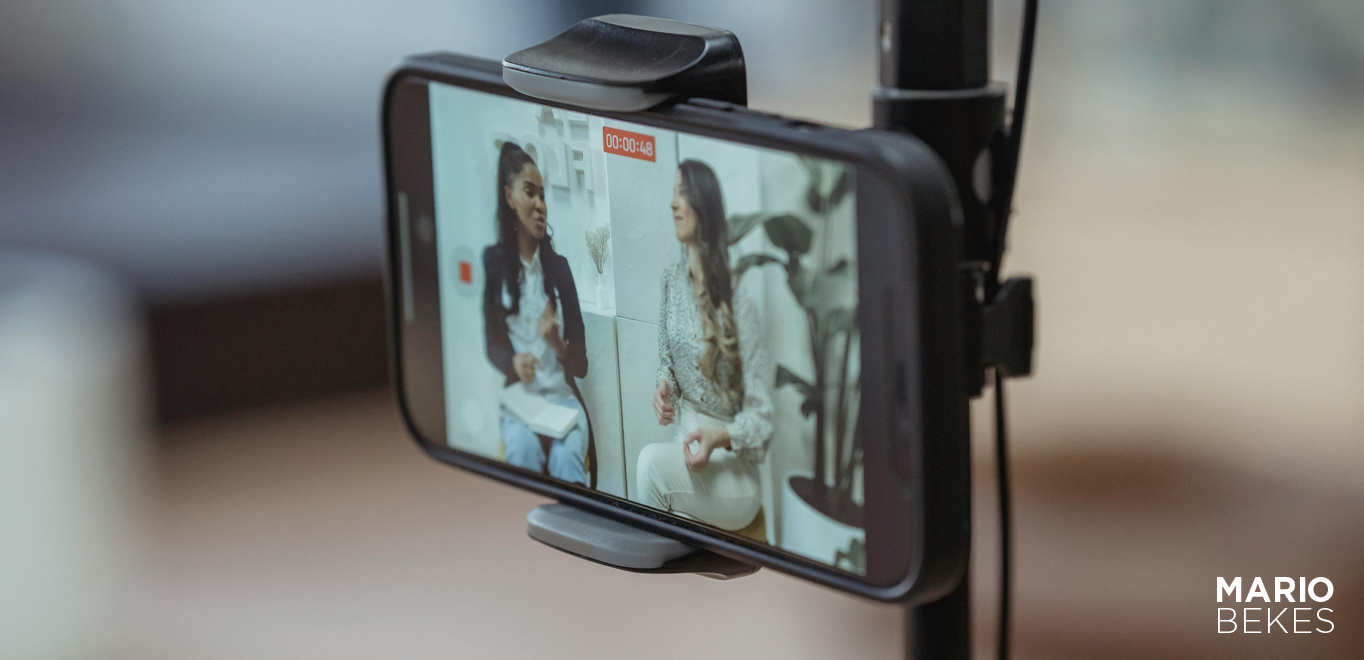The Hypocrisy of Financial Gurus: The Illusion of Wealth Creation
2009 was one of the most anticipated court proceedings in US history, as no one could believe that someone could accumulate a loss of $50 billion by lying, cheating, creating Ponzi schemes and engaging in fraudulent activities.
His name is Bernard Madoff, and he managed money not only from the rich and famous but mostly from ordinary, hard-working people who trusted him. At the end, all Bernard Madoff said was, “I cannot adequately express how sorry I am for what I have done,” and the rest is history.
However, Bernard Madoff just started a new trend: how do you attract people to invest their hard-earned money? The next person on the scene was Sam Bankman-Fried, the former CEO of the bankrupt cryptocurrency exchange FTX, who lost $8 billion of investors’ money. Prior to this, he was regarded as a rising star who appeared on TV shows and spoke on panels, building his amazing reputation on the money of hard-working people.
The question to be asked is: how or by whom did you influence someone to be your financial or business guru?!
Guru: Hypocrite or not?
A few days ago, during a conversation about business, finance, and wise investing with a friend, he mentioned having read Robert Kiyosaki’s book Rich Dad, Poor Dad. Naturally, the question arose: have I also read that book?
To be honest, I haven’t read the book. However, while working on my podcast show or conducting research, I came across numerous chapters and quotes from the book, which piqued my interest even more. I will share my thoughts on this topic with you.
The credibility of Kiyosaki’s work piqued my interest, so I asked Holly Grail of Knowledge, “Dr. Google,” Who is Robert Kiyosaki?
On top of the page is the link to the article with the following title: “Rich Dad, Poor Dad’s“ Robert Kiyosaki Says He’s $1.2 Billion In Debt Because “If I Go Bust, The Bank Goes bust. Not My Problem”.
In the case of Robert Kiyosaki, a man who coaches, teaches, and mentors others on how to achieve wealth and success, I would consider this statement to be quite normal, given that his primary focus is on achieving financial success for himself and by becoming Your Financial Guru.
After all, people who place their trust in individuals like Kiyosaki indirectly support the lifestyles of gurus, coaches, and the like.
Who is Robert Kiyosaki?
For those who haven’t heard of or know Robert Kiyosaki, he is an American businessman and author, best known for his Rich Dad, Poor Dad series of personal finance books.
He founded Rich Dad Company, a private financial education company that teaches people about finance and business through books and videos.
His company, Rich Global LLC, declared bankruptcy in 2012.
And now we get to the intriguing part: how did someone who should be teaching us, a “guru” on finance, bring his companies to bankruptcy?
In 1947, Kiyosaki was born in Hawaii. During the Vietnam War, as a Navy officer and helicopter pilot, he gained experience in troop leadership. After that, in 1977, he worked for Xerox to gain experience in sales.
Kiyosaki founded “Rippers” in 1977 to sell wallets made of nylon and Velcro. When the business officially failed, he accepted a position as a sales associate with Xerox, where he worked until June 1978.
In 1993, Kiyosaki released his first book, If You Want to Be Rich and Happy, Don’t Go to School. In his book, he encouraged parents to start their kids in real estate instead of sending them to college.
Kiyosaki established Cashflow Technologies, Inc., a holding company, to own and operate the Rich Dad and Cashflow brands in 1997. To teach people about business and finance, Kiyosaki designed the Cashflow board and software games.
The company “Rich Global LLC,” owned by Kiyosaki, declared bankruptcy in 2012.
Kiyosaki is the author of over 26 books, including Rich Dad, Poor Dad, which has sold over 41 million copies worldwide and been translated into 51 languages.
He became well-known after Rich Dad, Poor Dad reached the top of the New York Times bestseller list and sold over 41 million copies globally.
Forbes estimates that Kiyosaki is worth about $100 million and has a number of businesses that he either fully owns, formerly owns, or partially owns through franchisees; however, Robert Kiyosaki stated in his interview on YouTube, “No one knows how much he is worth,” and that is true; it’s a pure guess by all of us.
How everything started
Kiyosaki’s career took off in 1985 when he co-founded the Excelerated Learning Institute, an educational firm that offered courses on social responsibility, investing, and entrepreneurship.
Because of the company’s success, Kiyosaki was able to begin investing in real estate. He sold the business in 1994 and went on to write his first book, “If You Want to Be Rich and Happy, Don’t Go to School.”
This is where we should stop.
For me, this raised a red flag: Sure, there are plenty of ways to get rich, but writing that you do not attend school?
So did he go first? Needless to say, the world stage is full of coaches, gurus, and many others who advocate “don’t go to school.”
If you don’t go to school, then you can’t question those gurus because what the guru says must be true, even if it is just an opinion, because of what the coach and guru say. I
It doesn’t work that way and never will; education is an important part of everybody’s life!
Who was this book intended for?
When Kiyosaki founded Cash Flow Technologies, Inc. in 1997, he took the next significant step towards success. The company is a financial institute that provides personal finance services and educational advice.
Kiyosaki made significant strides this year, publishing his most well-known book, Rich Dad, Poor Dad, and launching the entire Rich Dad brand around its success.
In addition to book profits, Kiyosaki has made a lot of money from seminars held by professionals under the Rich Dad brand. These seminars have been a significant source of income for the business and can cost tens of thousands of dollars.
Apart from this, real estate investing has contributed significantly to Kiyosaki’s riches.
In 1973, he made his first real estate venture in Hawaii. He currently enjoys a passive income from his ownership of approximately 7,000 properties; however, in his interview on VladTV’s YouTube channel,stated he ownes 12,000 properties.
How did his companies go bankrupt, even with all his knowledge?
Bankruptcy of the Rippers.
In 1977, Kiyosaki founded Rippers, a business that marketed wallets in the style of surfer dudes made of nylon and Velcro.
These wallets were the first of their kind and had a unique concept. Due to fierce competition from outside, this company ultimately went bankrupt, so Kiyosaki decided to choose a different route.
The Velcro Wallet Company goes bankrupt.
Kiyosaki attempted to collaborate with the rival business to try to accomplish his objective. This led to the company filing for bankruptcy.
Rich Global LLC goes bankrupt.
On August 7, 2012, Rich Global LLC filed for bankruptcy. Learning Annexe forced the business to pay over $24 million, but they lacked the necessary funds to do so.
According to reports, Kiyosaki and the Learning Annexeee had an agreement whereby Kiyosaki would give the Learning Annexeee a portion of the money he made from speaking engagements in exchange for the Learning Annexeee booking him for book marketing.
It is believed that Kiyosaki neglected to pay these sums to the Learning Annexe.
I pose the same query once more: Is Robert Kiyosaki a scammer?
Regarding Kiyosaki’s fraud status, rumours have been circulating ever since his company filed for bankruptcy.
Despite the company’s collapse, Kiyosaki’s personal finances appeared to be unaffected, and he has maintained his large net worth, raising questions about whether or not he is a fraud.
Other than his bankruptcy, some have raised concerns about Kiyosaki’s financial success. These include statements made in his book that some have disputed as untrue.
According to Forbes, there is no record of Kiyosaki’s money creation before he became wealthy through the book Rich Dad, Poor Dad. This has led some to question the book’s authenticity as fiction or non-fiction.
Recently, I’ve noticed an increase in the number of so-called gurus—online experts who use social media to provide life and business advice—and upon deeper inspection, we find that these individuals lack any references.
In past podcast episodes, I’ve discussed several influencers and gurus; they turned out to be scammers despite being two of the most well-known gurus.
While I know many of you will disagree with my findings, this podcast is about helping each other, sharing knowledge, and discussing facts, not opinions, to save you from facing any obstacles and fighting unnecessary battles.
Ultimately, we cannot definitively determine whether Robert Kiyosaki is telling the truth or lying. However, it’s important to note that since the publication of his book in 1997, nearly 30 years ago, numerous financial landscapes, laws, and legislation have changed. Therefore, attempting to profit from a fictional book from 1997 in today’s business and financial market would be incorrect.
Robert Kiyosaki has built his firm on providing sound advice on business and wealth creation, but his own companies haven’t always remained financially stable. On the contrary, he is proud to be in debt of $1.2 billion, but that is not his fault; it is the financial institutions who gave him money. But again, Robert Kiyosaki stated that he has 12,000 properties, so banks will take those properties as collateral.
However, fraud in the sale of courses—that is, knowledge—piqued my curiosity.
What is the scam about Rich Dad’s education?
The purported fraud surrounding Robert Kiyosaki’s educational seminars and courses is predicated on both the cost and the course material.
This is a complimentary, one-day educational conference that offers insightful commentary and guidance before the course.
The attendees then receive a three-day workshop, which costs about $500 and appears to offer fewer insights, more advertising, and an incentive to enrol in the next course.
The next step is a course that costs a whopping $45,000 or more. The course aims to provide attendees with valuable education and financial strategies for wealth creation.
I understand you’re asking if Kusr’s money was typographical, but no.
I believe it is reasonable to charge for the course.
But it’s crucial to charge fairly for your services. $450 might make sense if you’re aiming to help someone become wealthy and valuable.
However, how is $45,000 appropriate for any course on personal finance?
Participants in this course report that the instructors aggressively promote additional courses, but the advice hasn’t resulted in any significant financial success for them.
We haven’t yet proven whether Kiyosaki’s educational courses are a scam or not.
The Critics
Critics have questioned Kiyosaki’s educational courses and philosophical beliefs’ morality and legality.
Critics have pointed to Kiyosaki’s ambiguous counsel, which hasn’t helped anyone actually become wealthy.
Furthermore, he has been accused of running a fake educational program with the sole purpose of inducing participants to pay more money for the next course.
It truly disturbs me to witness individuals who are essentially victims trying to earn money. I find it challenging to understand how people can think that a single book or course can generate money overnight.
Like Kiyosaki, hundreds or thousands of others do the same!
There is no reason to spend hundreds of dollars on courses; simply earn, save, get out of debt, and invest.
Couldn’t it be simpler?
And yes, not everything you see on social media is real and true.









